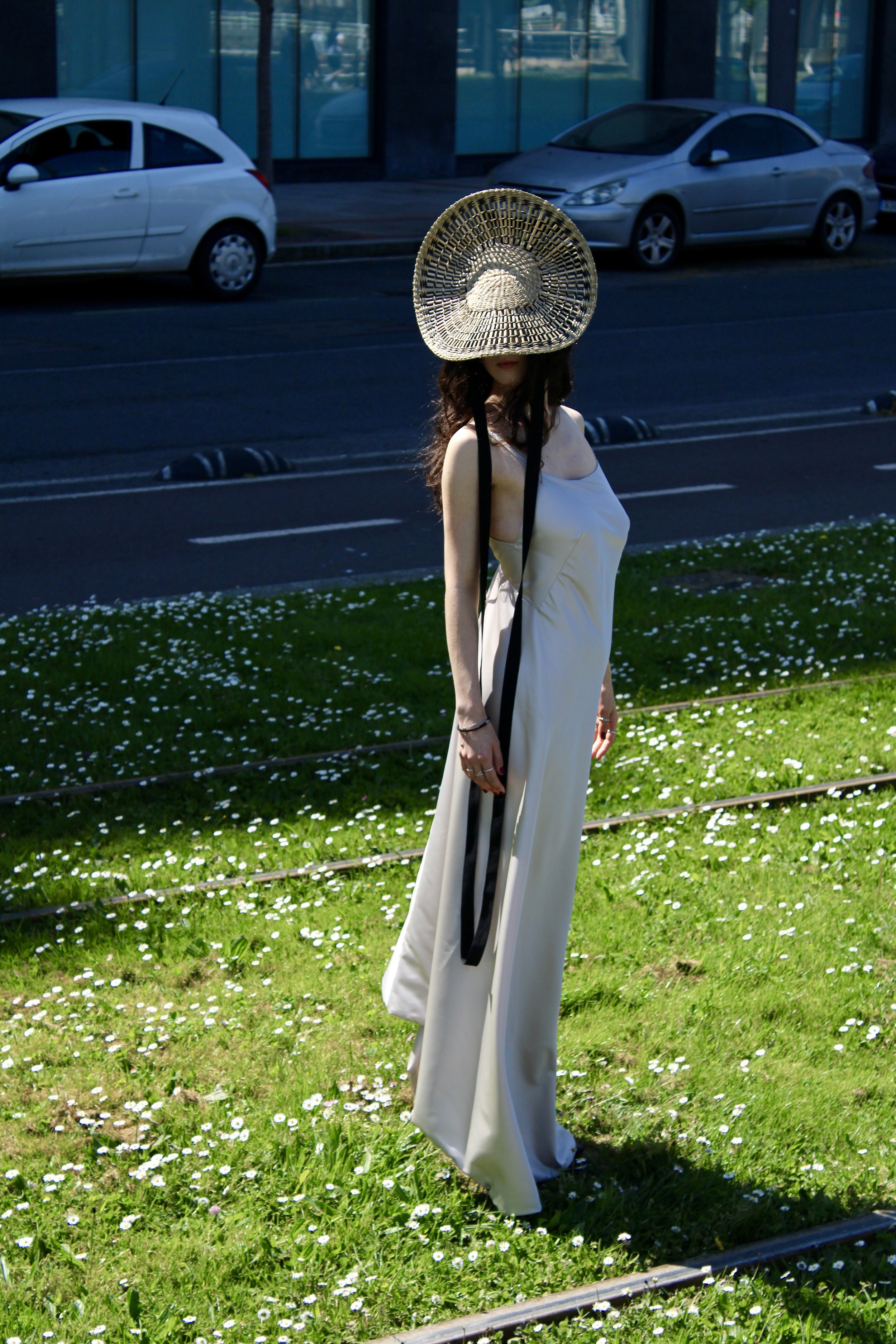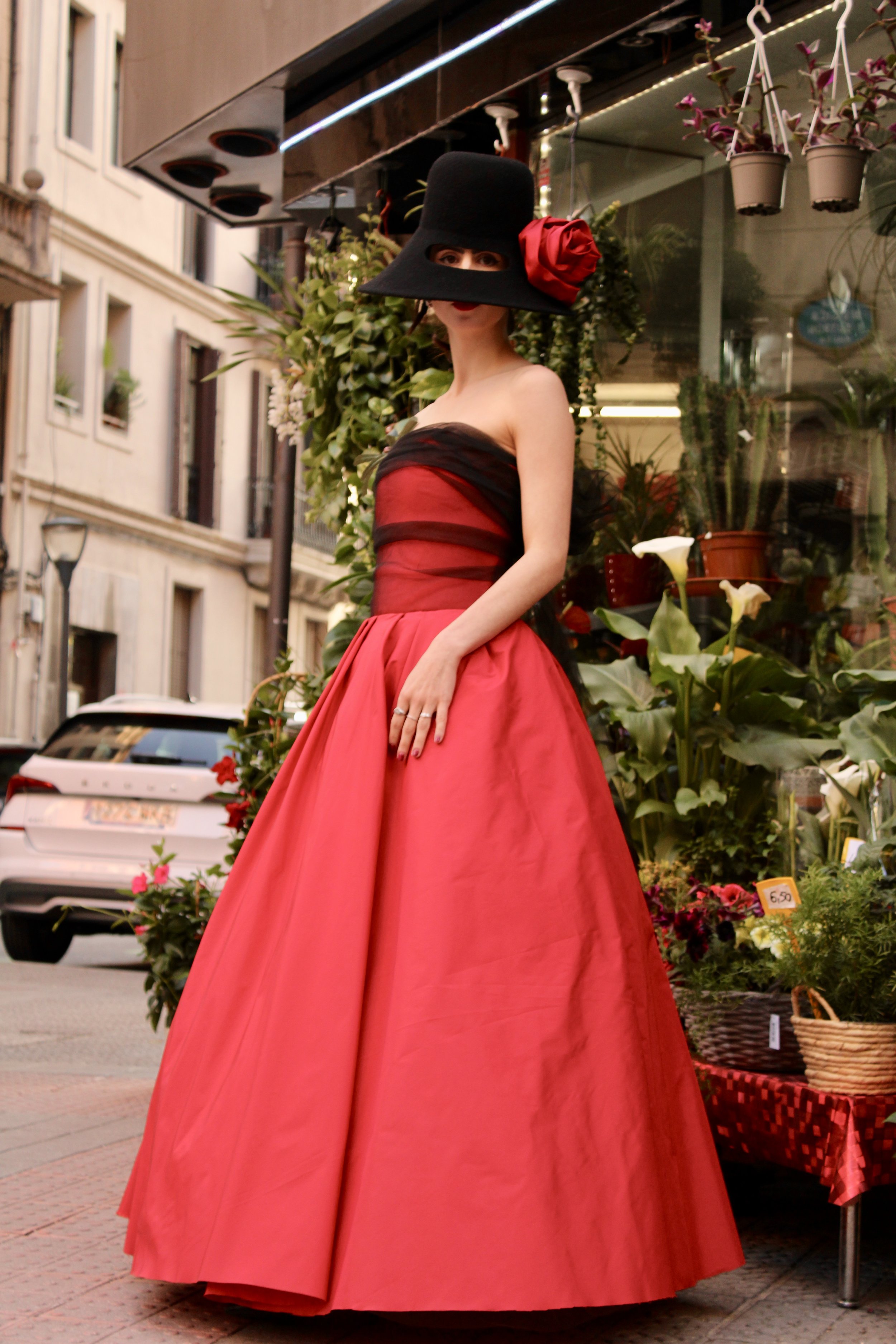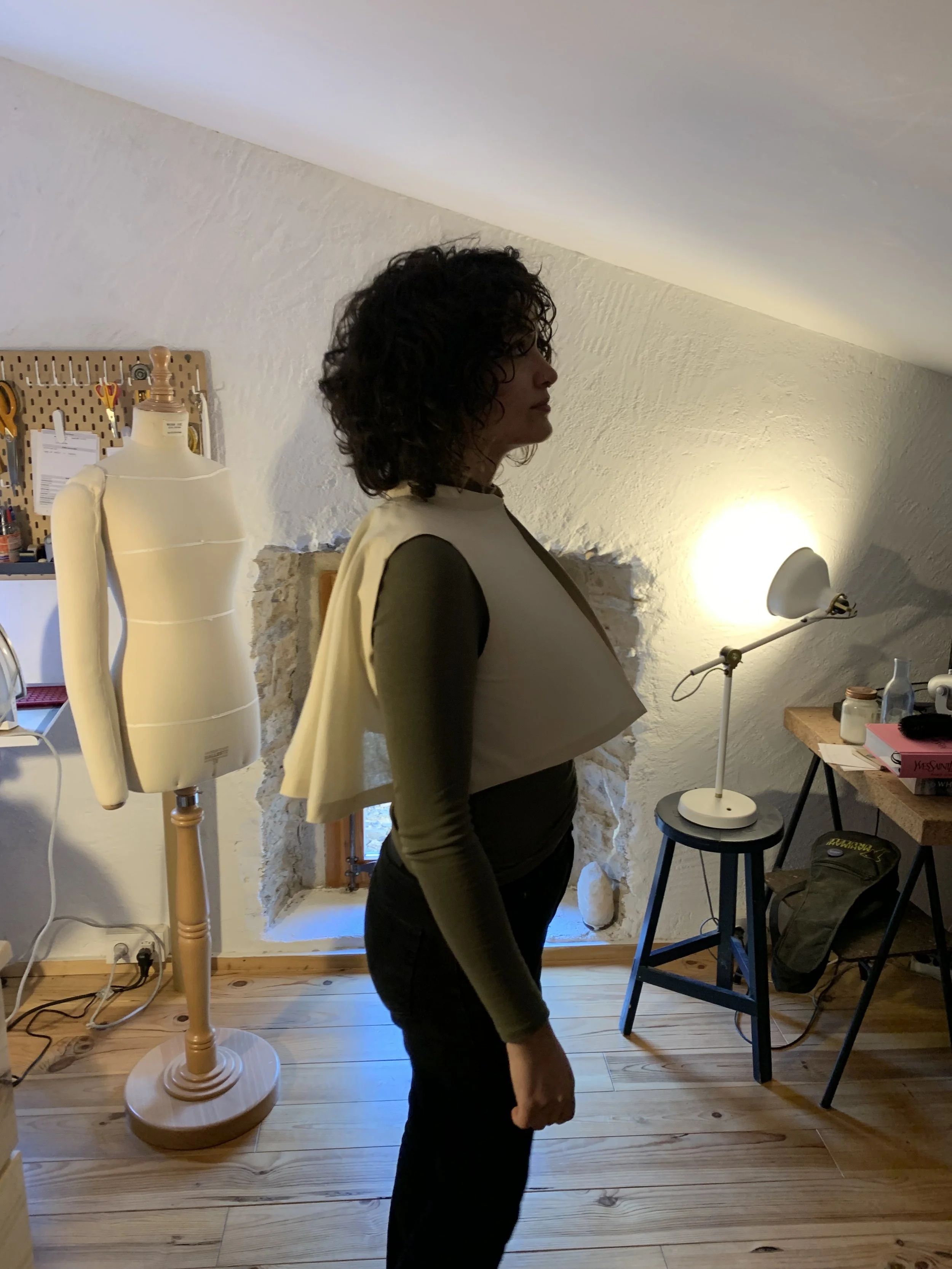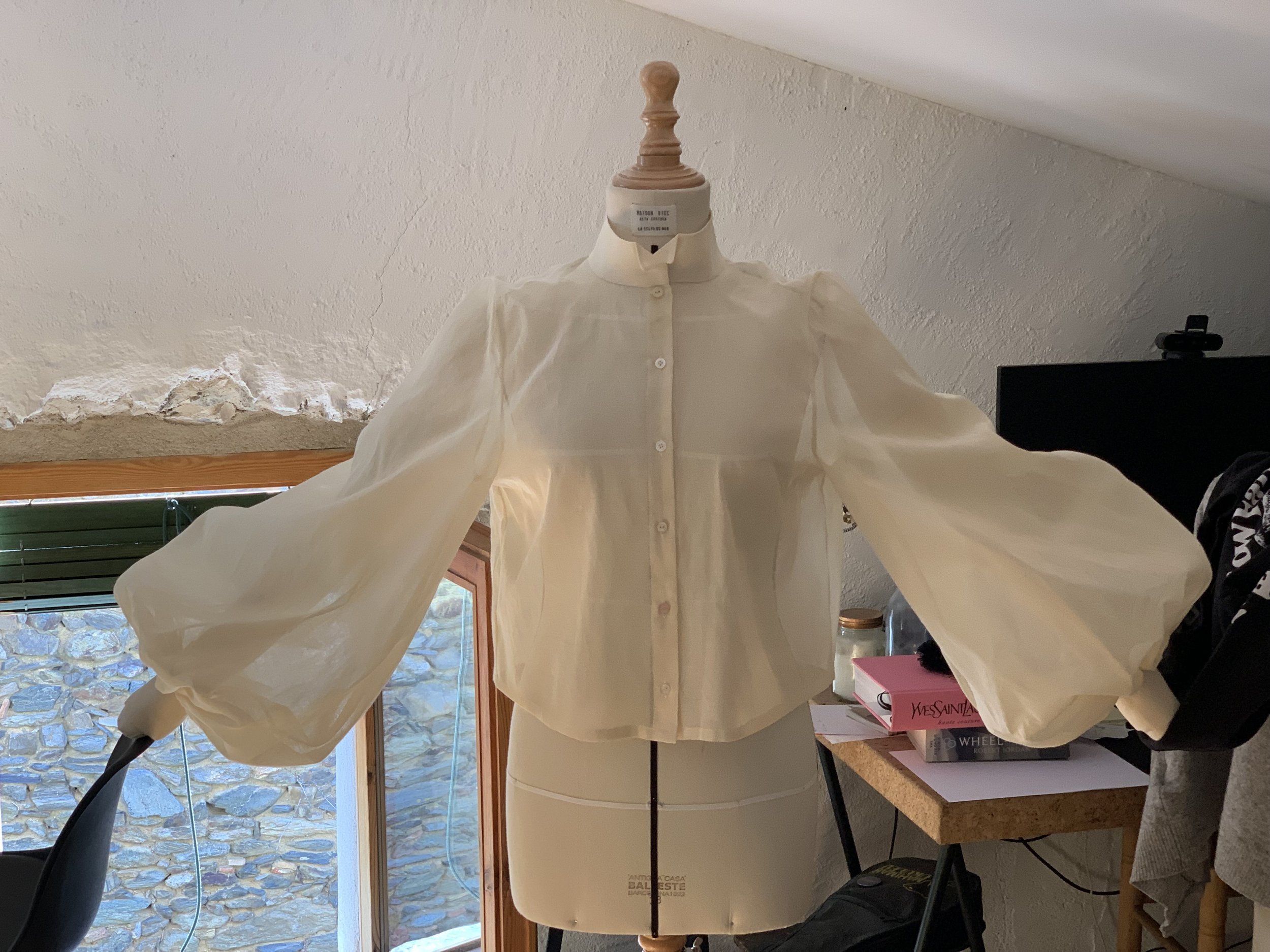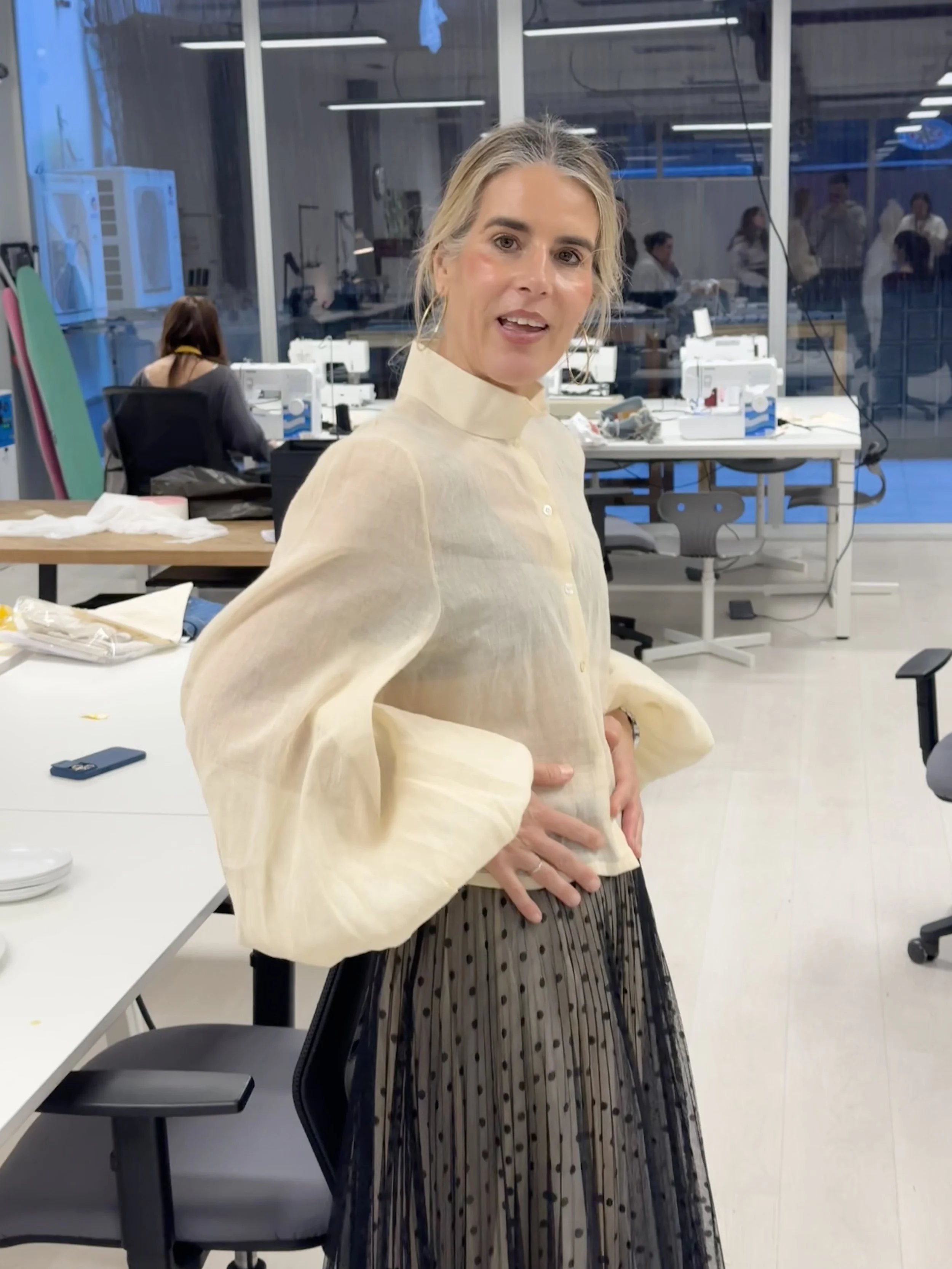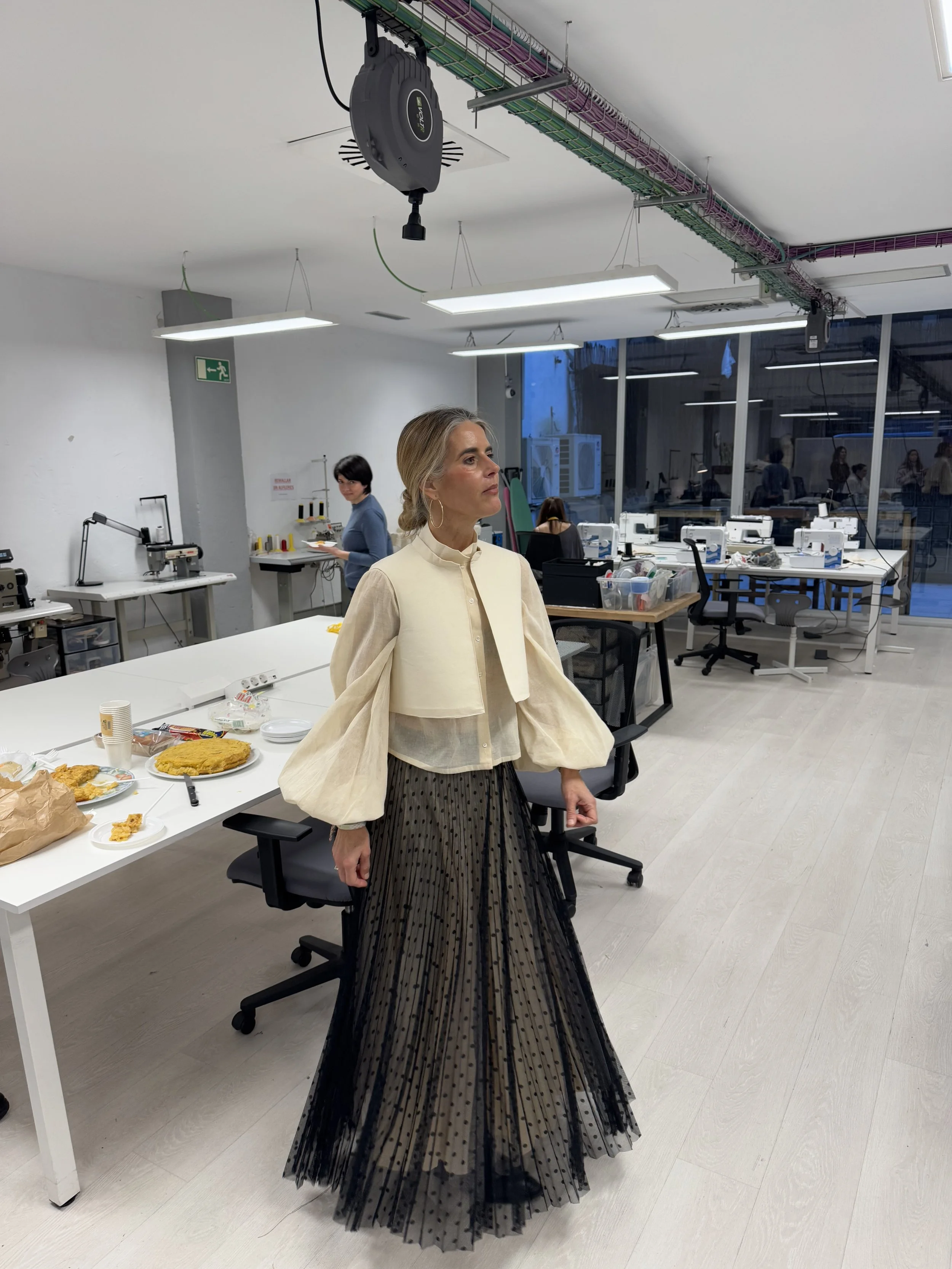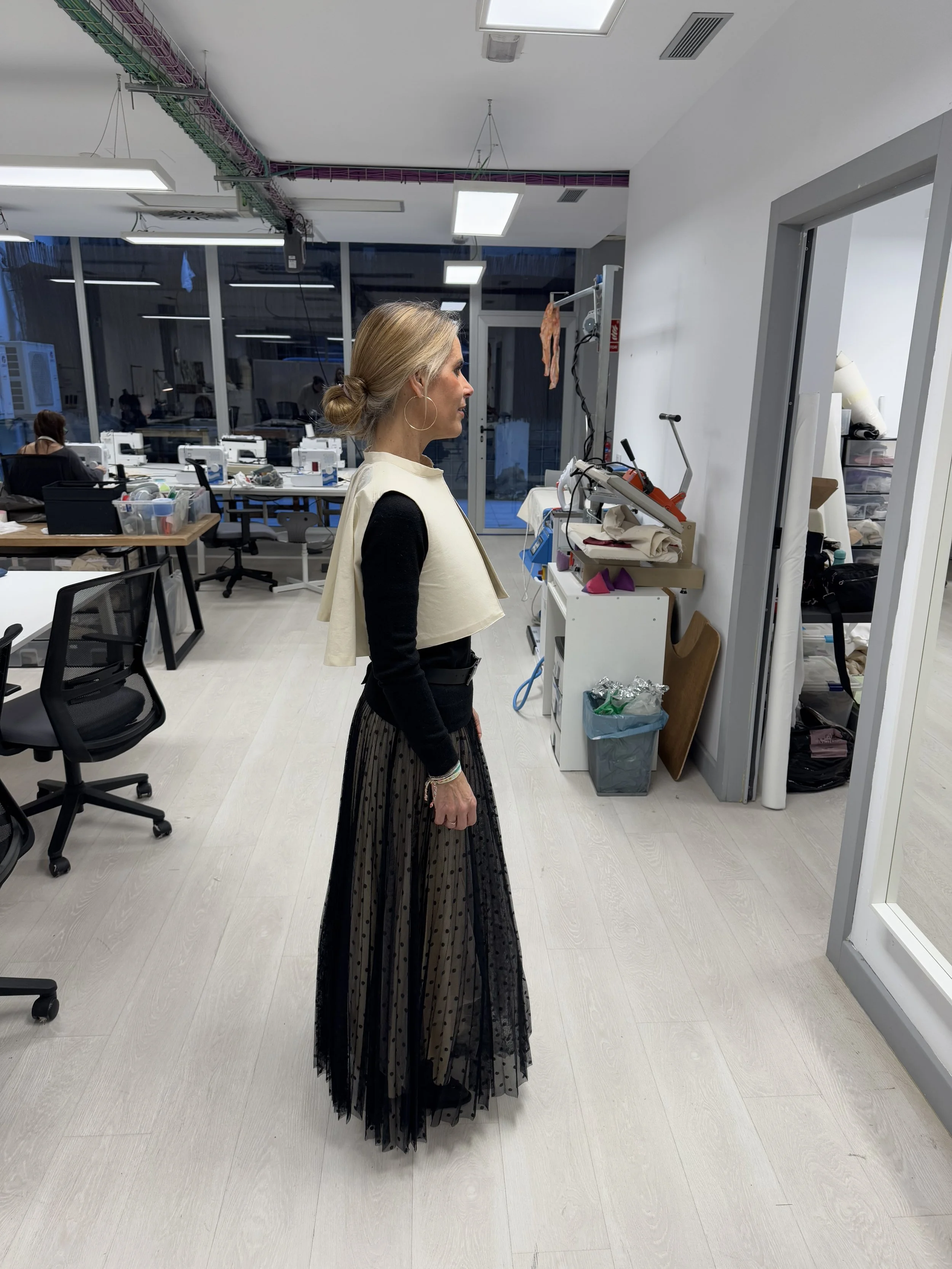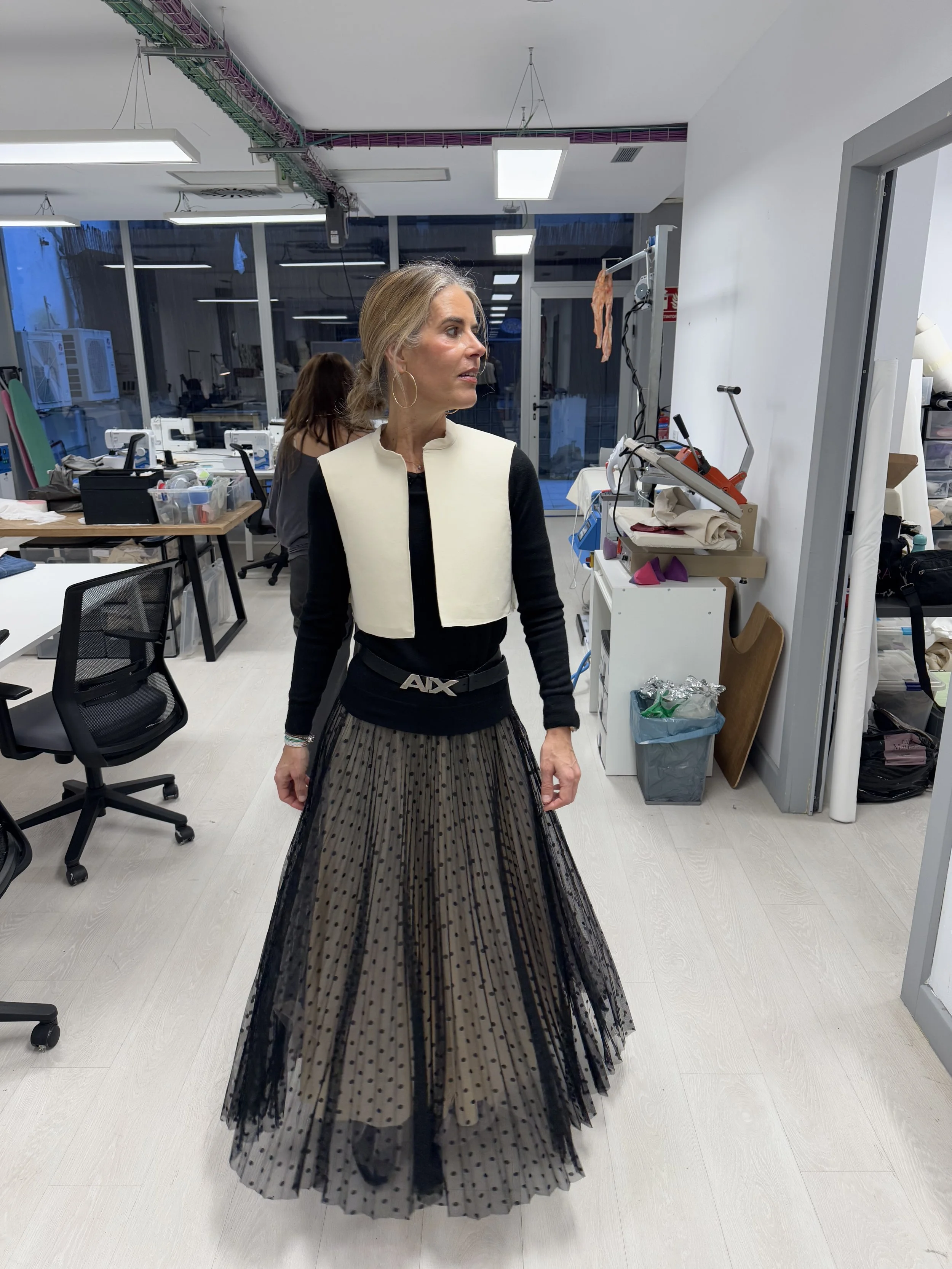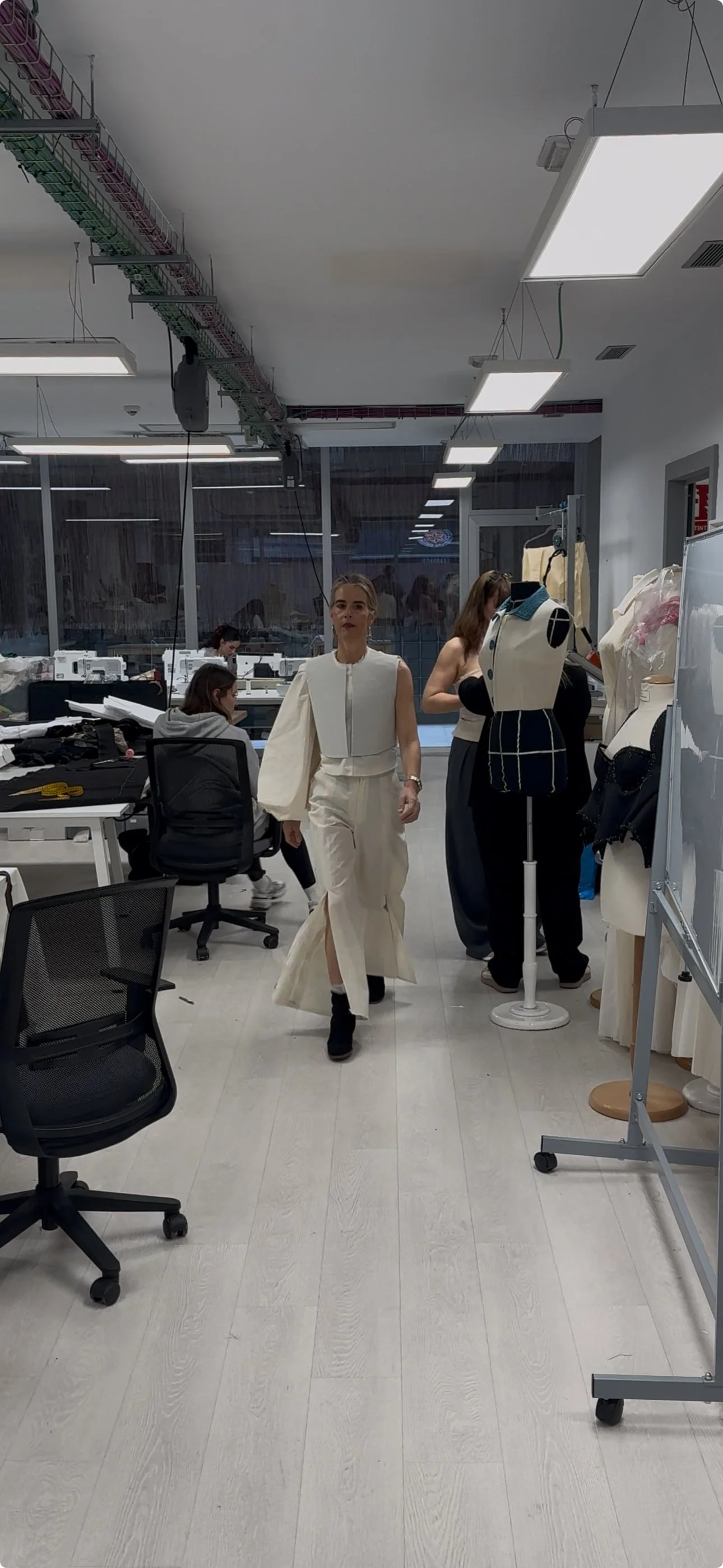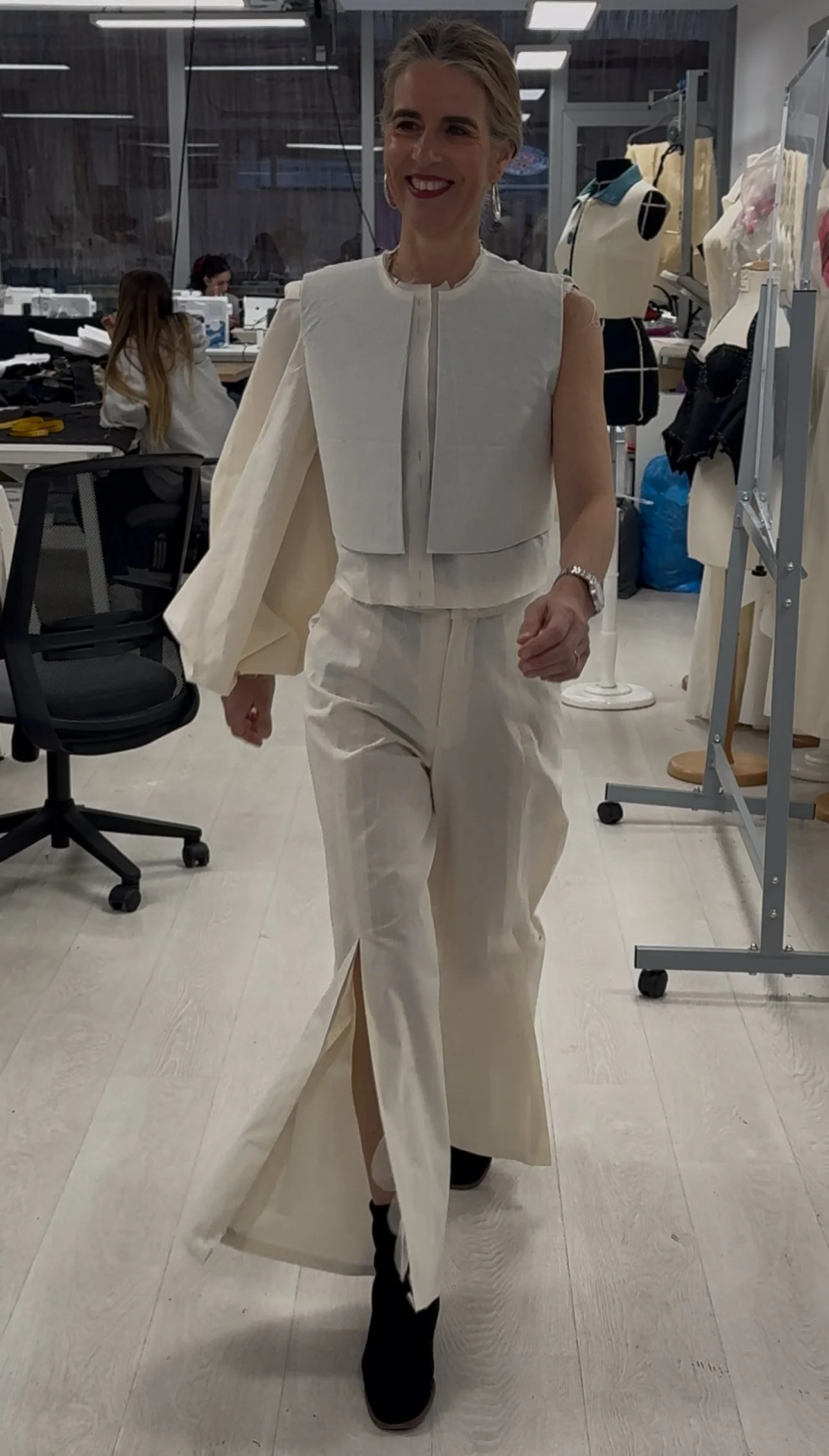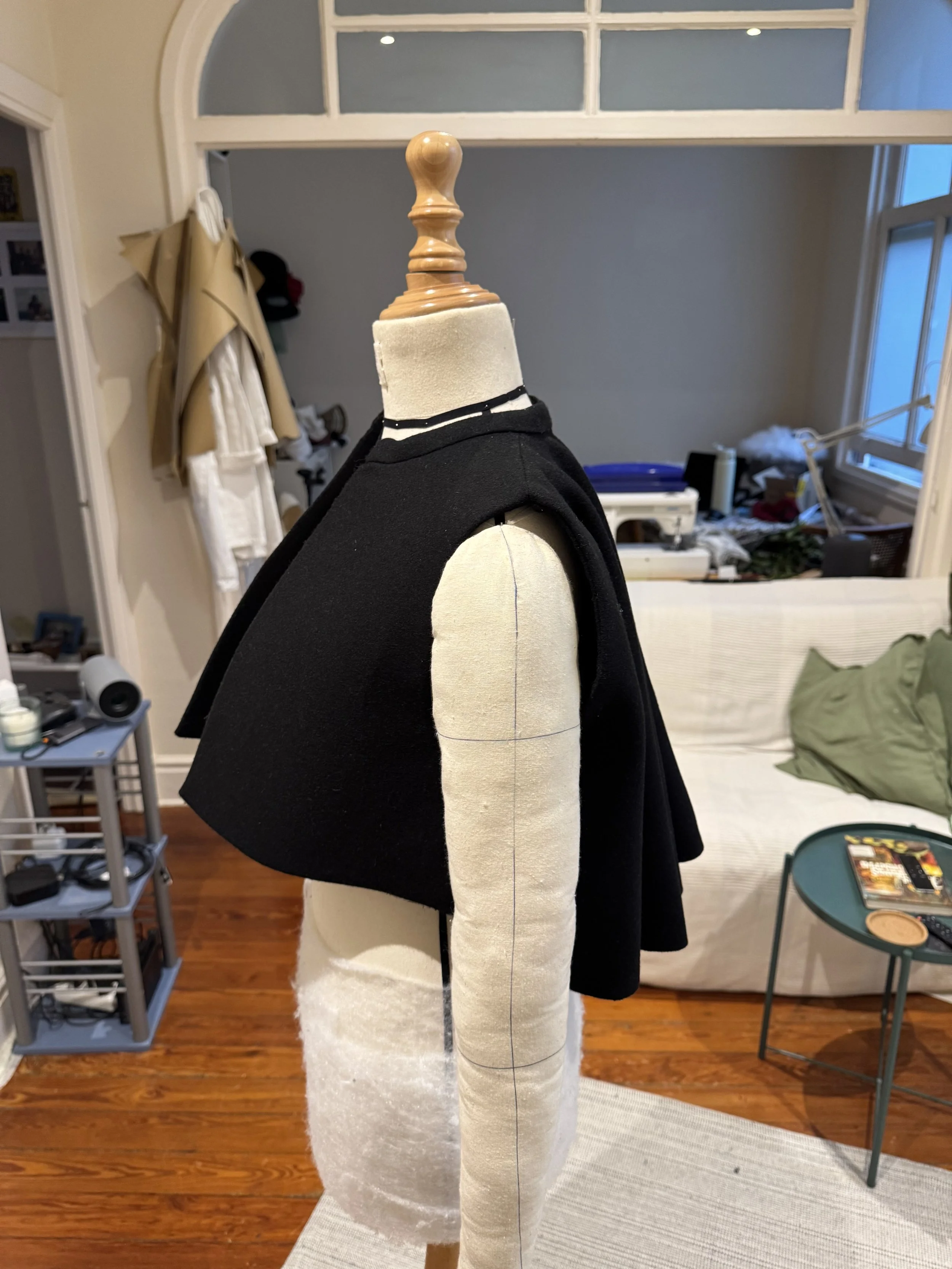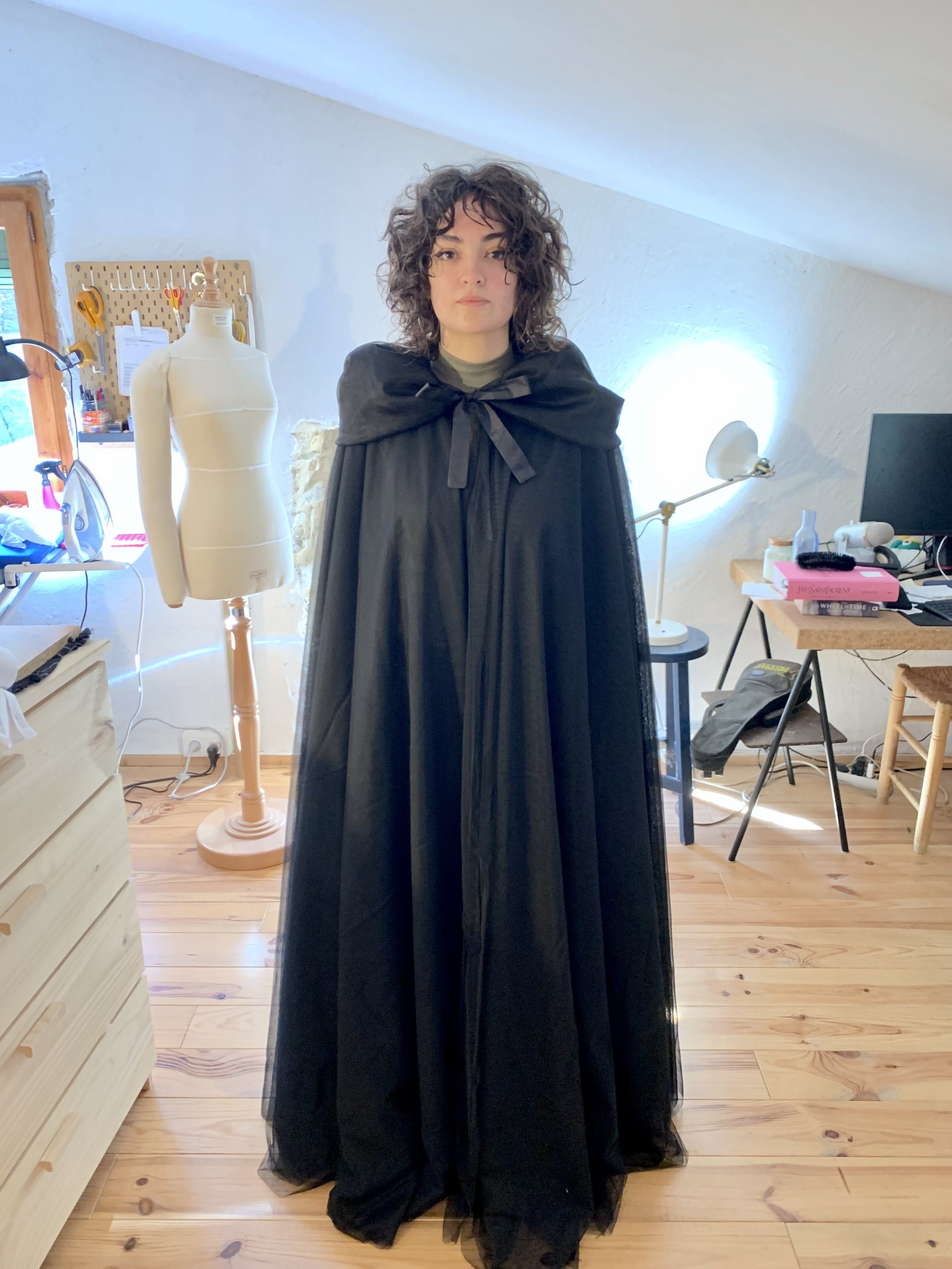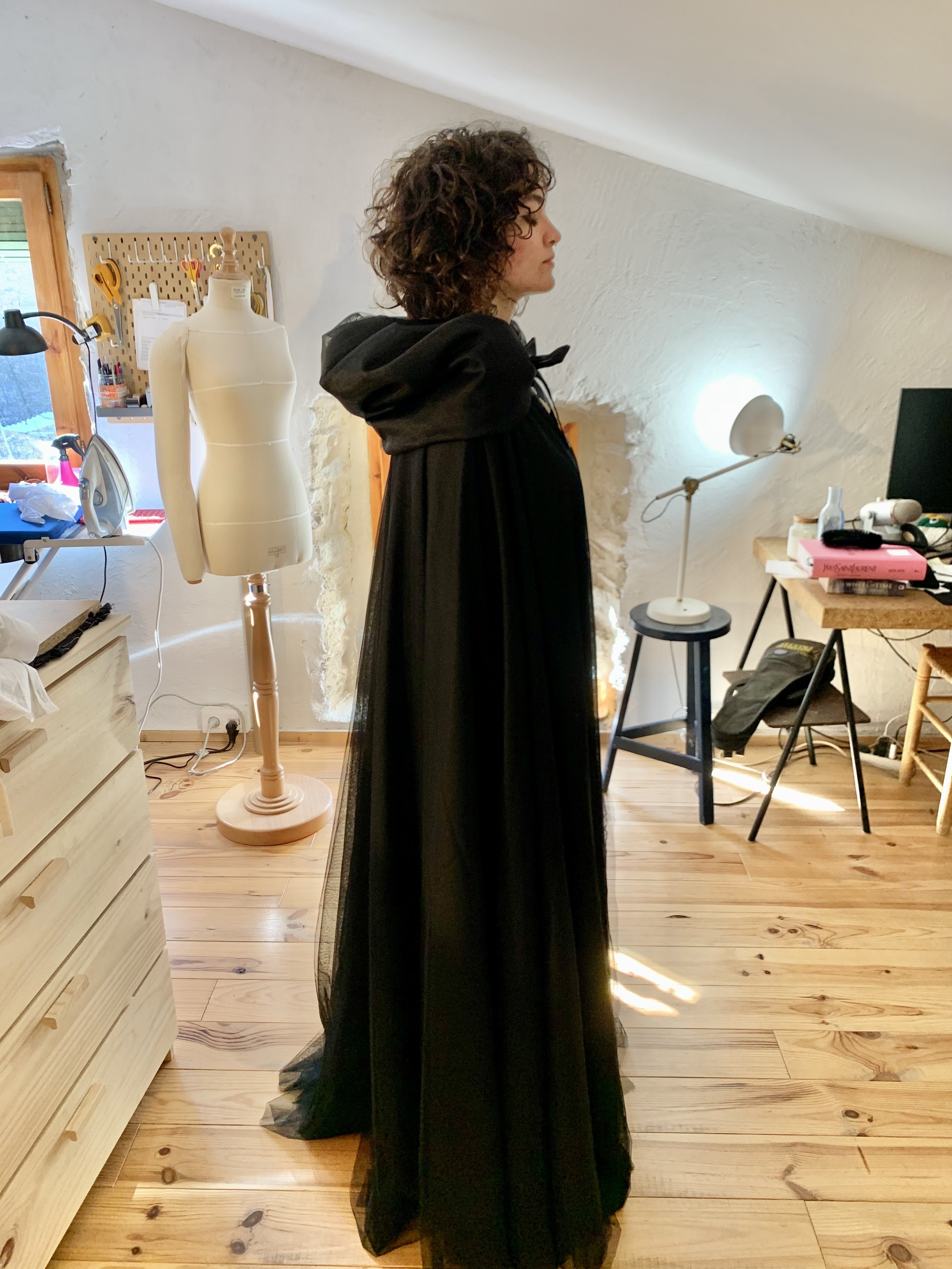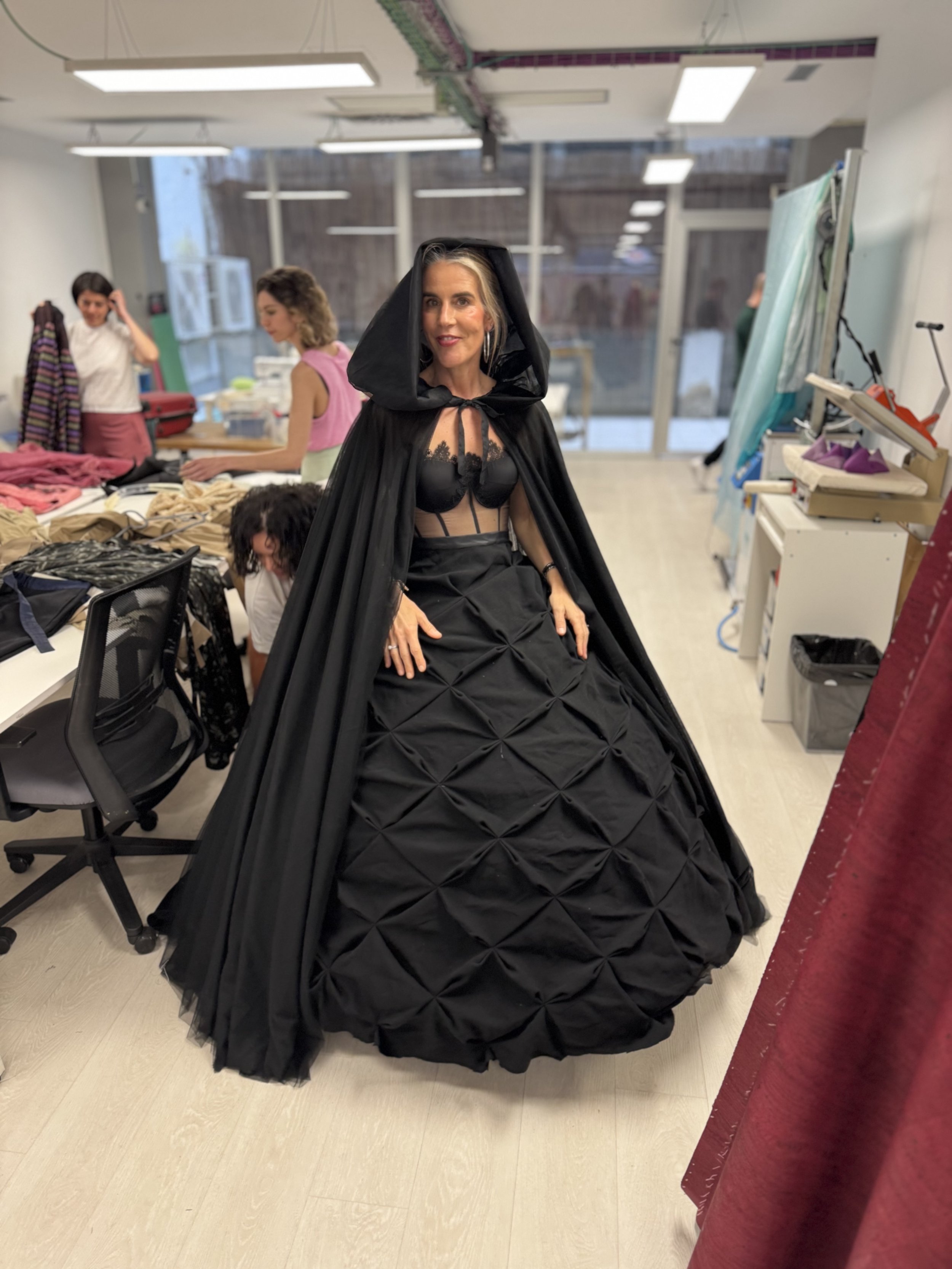Una Alegoría española
A project in constant development,
born from the love I have for my homeland.
It is called Alegoría (Allegory) because each dress or ensemble has its origin in a myth, story, or a piece of literature, art, or music, which it seeks to represent through fabric.
This project spans the Spanish territory, from the south to the north.
Each piece arises from a unique motherland and folklore.
2023-
¿Quién Levantó Los Olivos?
The poem Aceituneros, by Miguel Hernández, is both the root of Paco Ibáñez’s song and the anthem of Jaén.
This dress aims to be a reconciliation with the memory of my maternal grandfather and Edna, a free greyhound. Both were from Jaén.
I was inspired by the strength we have to adapt to new lands and environments, and by the importance of our roots, unmovable, like the olive trees.
Three parts that make up the ensemble, hat, overdress, and dress, represent three qualities that both of them shared.
The hat represents the dedication and effort to adapt, but with stubbornness at the forefront.
Like the shadow, even the summer sun won’t stop me.
The overdress represents the armor that our origin gives us. Everything that our mothers instill in us as children and what the land we grow up in imprints on our way of thinking.
Freedom and transformation. Each leaf is a lesson learned, resting on top of a transparent layer, like a bride’s veil. A new leaf, the next chapter, but still from the same story.
Like the olive tree, perennial and never a slave
The dress is the soul of the being, which, despite the entire journey of its life, remains pure and simple.
It represents the sensitivity and simplicity of their character, though at times stoic and proud, they always kept a part of themselves that was lively and full of joy for life.
Like the soul of a tree, it is found in its oil.
Con un sólo golpe de mi estoque
it is the iconic phrase of the character who inspires this dress, El Zorro.
Through the image of the rebellious vigilante embodied by Don Diego de la Vega, this dress seeks to represent the soul of a rebellious and just people, one that stands against oppression, abuse, and power.
By drawing a parallel between two opposing sides—the people and the authorities—the dress materializes this contrast: the outer layer appears simple, minimal, and fluid, while the interior reveals pure structure and rigidity.
Plaza Alta
Influenced by the song of the same name by Paco de Lucía, by the South and its traditions, by the elegance of Sundays, and by the world of bullfighting.
This three-piece ensemble seeks to represent the strength and bravery of the Andalusian people, the passage of tradition through the years, and the beauty of blood.
Though it always hurts when you see it, it runs through our veins and gives us life, just like the people we love.
La Santa Compaña
Like the procession of souls emerging from purgatory, this all-black, ensemble seeks to represent that legend, overflowing with mystery and darkness.
Composed of a dress and a cape, it embodies the idea of souls moving among us, unnoticed—carrying the weight and burden of an entire life in the skirt of the dress, and the lightness and ethereality of the beyond in the feathers of the cape.






